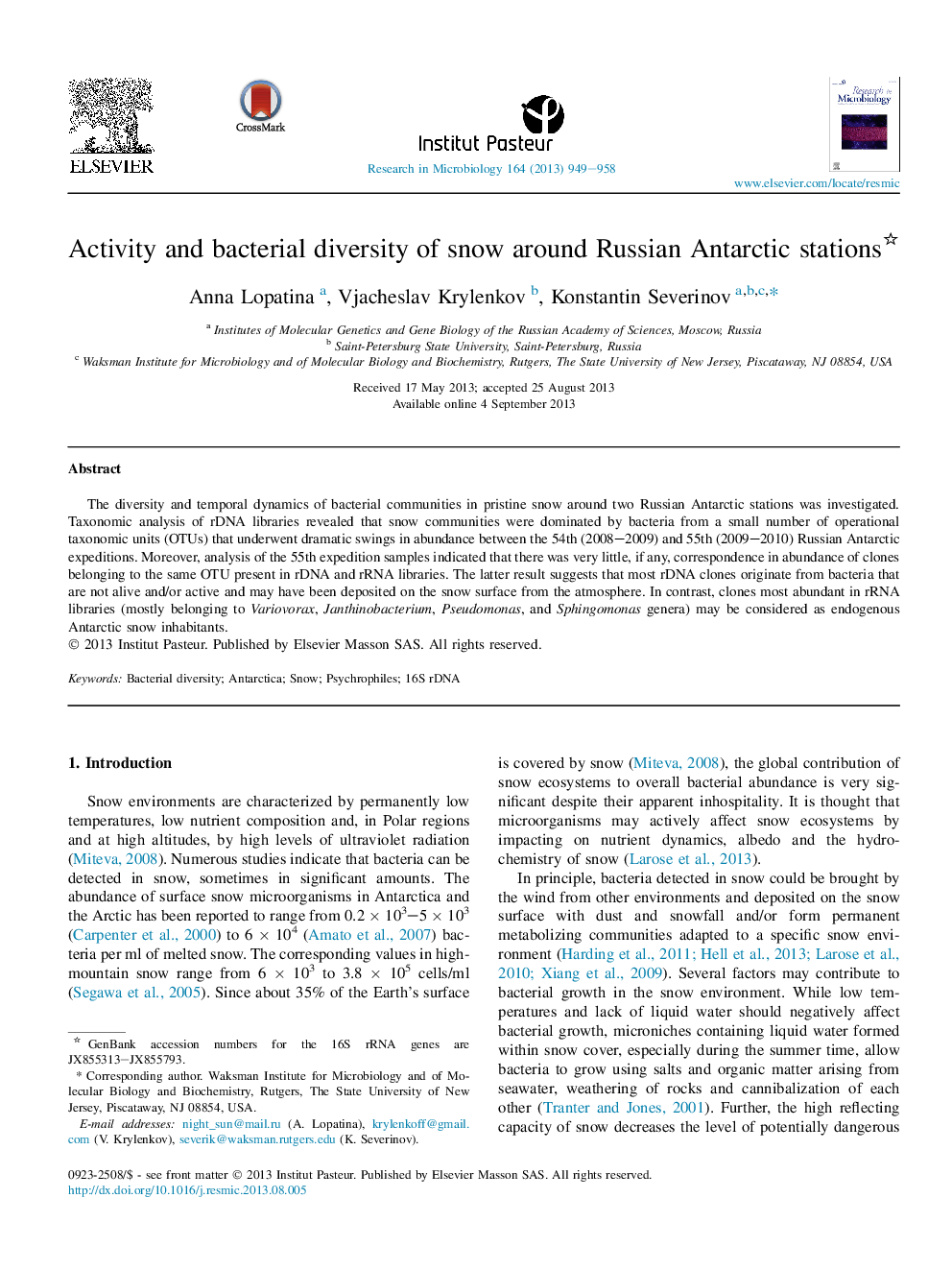| Article ID | Journal | Published Year | Pages | File Type |
|---|---|---|---|---|
| 4358889 | Research in Microbiology | 2013 | 10 Pages |
The diversity and temporal dynamics of bacterial communities in pristine snow around two Russian Antarctic stations was investigated. Taxonomic analysis of rDNA libraries revealed that snow communities were dominated by bacteria from a small number of operational taxonomic units (OTUs) that underwent dramatic swings in abundance between the 54th (2008–2009) and 55th (2009–2010) Russian Antarctic expeditions. Moreover, analysis of the 55th expedition samples indicated that there was very little, if any, correspondence in abundance of clones belonging to the same OTU present in rDNA and rRNA libraries. The latter result suggests that most rDNA clones originate from bacteria that are not alive and/or active and may have been deposited on the snow surface from the atmosphere. In contrast, clones most abundant in rRNA libraries (mostly belonging to Variovorax, Janthinobacterium, Pseudomonas, and Sphingomonas genera) may be considered as endogenous Antarctic snow inhabitants.
